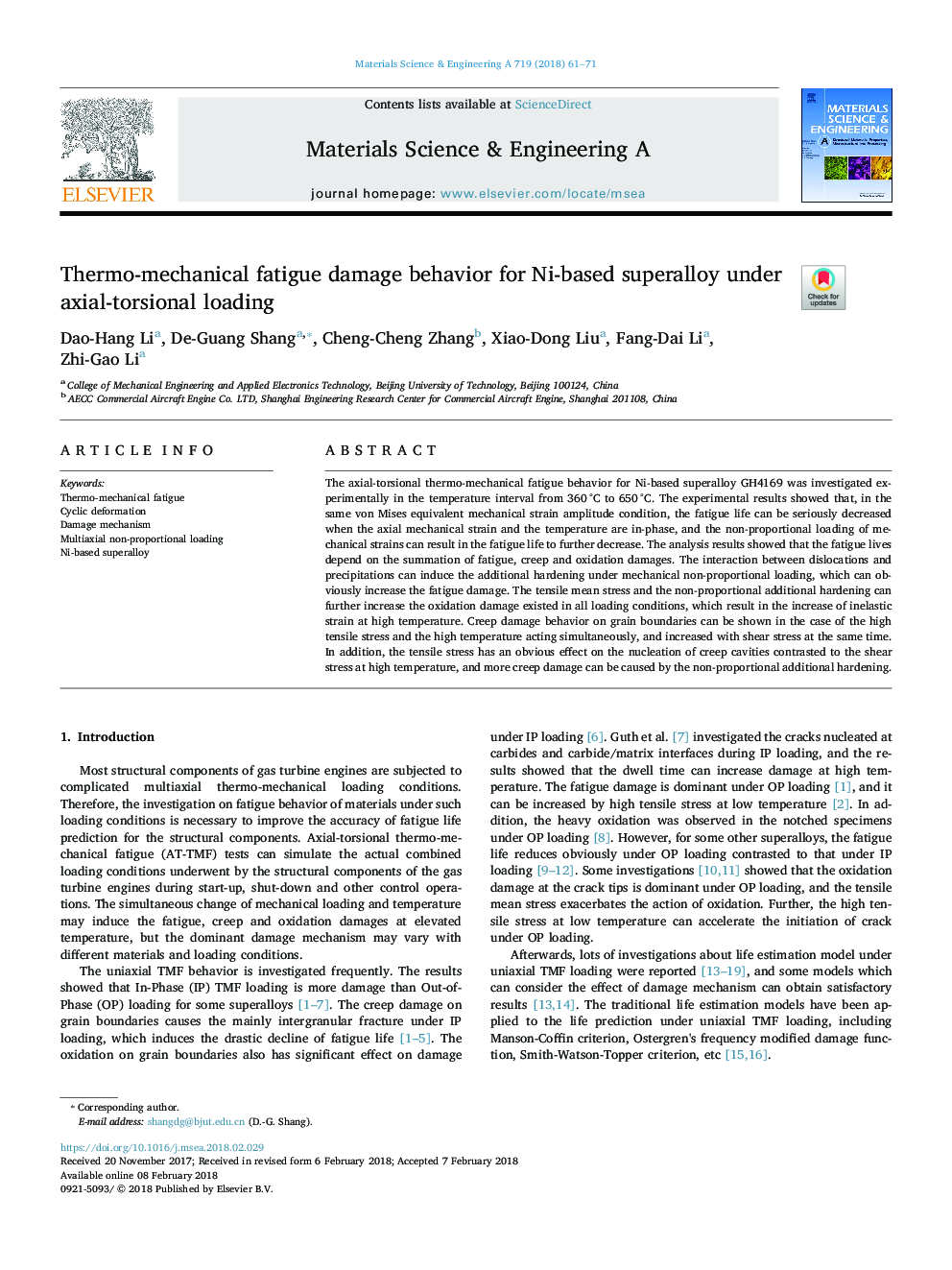| Article ID | Journal | Published Year | Pages | File Type |
|---|---|---|---|---|
| 7973098 | Materials Science and Engineering: A | 2018 | 11 Pages |
Abstract
The axial-torsional thermo-mechanical fatigue behavior for Ni-based superalloy GH4169 was investigated experimentally in the temperature interval from 360â¯Â°C to 650â¯Â°C. The experimental results showed that, in the same von Mises equivalent mechanical strain amplitude condition, the fatigue life can be seriously decreased when the axial mechanical strain and the temperature are in-phase, and the non-proportional loading of mechanical strains can result in the fatigue life to further decrease. The analysis results showed that the fatigue lives depend on the summation of fatigue, creep and oxidation damages. The interaction between dislocations and precipitations can induce the additional hardening under mechanical non-proportional loading, which can obviously increase the fatigue damage. The tensile mean stress and the non-proportional additional hardening can further increase the oxidation damage existed in all loading conditions, which result in the increase of inelastic strain at high temperature. Creep damage behavior on grain boundaries can be shown in the case of the high tensile stress and the high temperature acting simultaneously, and increased with shear stress at the same time. In addition, the tensile stress has an obvious effect on the nucleation of creep cavities contrasted to the shear stress at high temperature, and more creep damage can be caused by the non-proportional additional hardening.
Related Topics
Physical Sciences and Engineering
Materials Science
Materials Science (General)
Authors
Dao-Hang Li, De-Guang Shang, Cheng-Cheng Zhang, Xiao-Dong Liu, Fang-Dai Li, Zhi-Gao Li,
